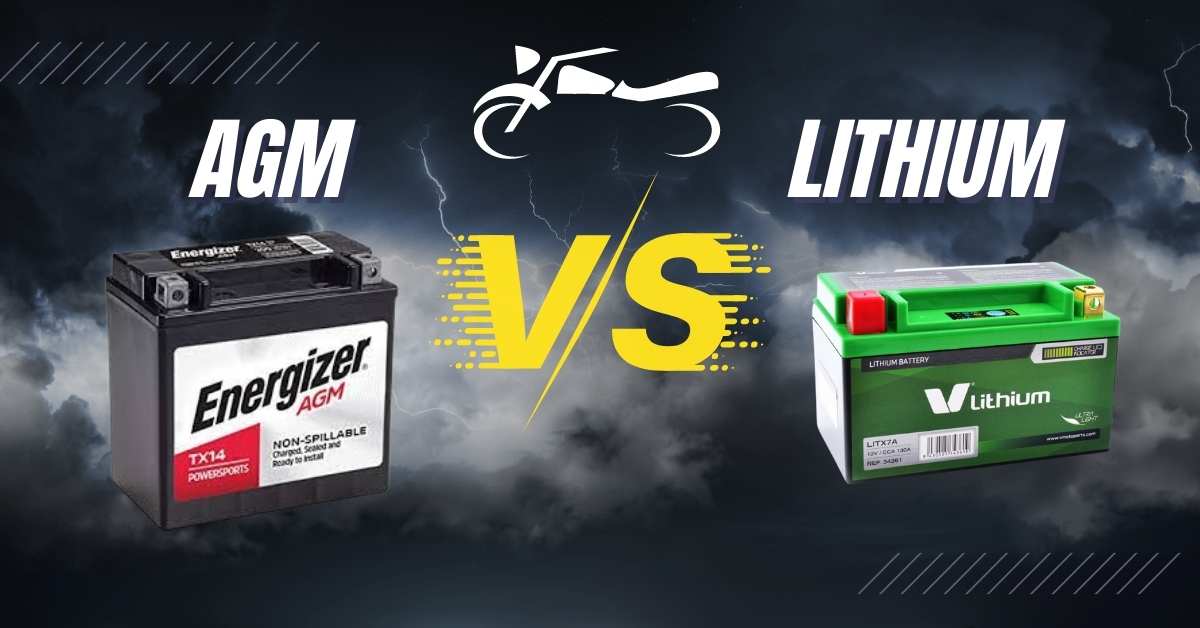There was once a simpler time when purchasing a motorcycle battery involved a quick trip to the auto part store, an easy decision, ensuring you have the right size and your preferred brand. However, things have changed, and you no longer are only presented with a single type of battery, a traditional lead-acid battery. Instead, you now have a choice to purchase an AGM or even a lithium battery. These newer technologies are more expensive, but is the increased cost worth it, and does your motorcycle need one?
Below, we’ll attempt to answer this question and explain why you may want to consider replacing your battery with an AGM or lithium one. We’ll also review the differences so you can head into the store more informed when it’s time to replace your dying battery.
What are the differences between Lead Acid, AGM, and Lithium batteries?
Battery types nowadays are not just fancy packaging; they are completely different technologies that impacts function, battery life, charging, output, and longevity. Unless you’re a new rider (or driver), you likely remember only ever having one option for batteries for a vehicle- a traditional flooded lead acid battery. However, batteries are one of the fastest growing technologies today, and these newer options are making their way into vehicles- and not just electric vehicles.
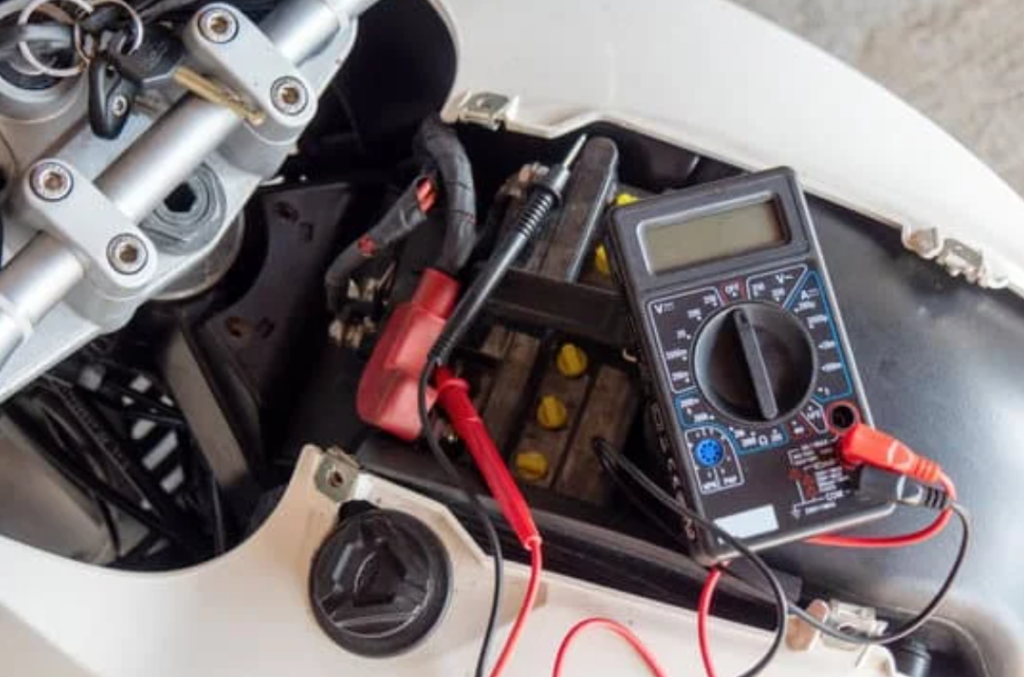
There are three main types of batteries that you’ll encounter when shopping for one for your motorcycle: Lead Acid, AGM, and Lithium. Let’s take a look at these in more detail.
Lead-Acid Batteries:
There was once a time when a flooded lead acid battery was the king of the motorcycle battery world. While still widely available, they’re no longer the go-to battery for many bikes. I’ll try not to get too deep into battery science, but it’s important to understand how a battery work to know the difference. All lead-acid batteries function similarly. Each battery cell contains lead plates with a separator and an electrolyte solution (water and sulfuric acid). When a reverse current gets applied to the battery (through a charger or alternator), through a chemical reaction, it creates electrons, which are stored in the battery and made available when you need electricity.

A flooded wet cell battery, which for simplicity we’ll call lead acid, has lead plates surrounded by the electrolyte solution (the acid). As they charge, the gasses produced (hydrogen and oxygen) are vented into the atmosphere. This process results in some water loss over time. Traditional lead acid batteries are usually maintainable, which means that to prolong the life of one, you need to add more distilled water.
While adding water is an important part of lead acid battery maintenance, it’s something that many people ignore. When a battery dies and won’t hold a charge, many people simply replace it. This technology has been around since the 1860s and hasn’t changed much since then.
AGM batteries
Absorbent Glass Mat batteries, typically called just AGM batteries, are technically lead acid batteries as well, in that they use lead battery plates and an electrolyte solution. The big difference is that the included glass mats in the battery wick the electrolyte solution, keeping it suspended in the solution and not free-flowing like conventional batteries.
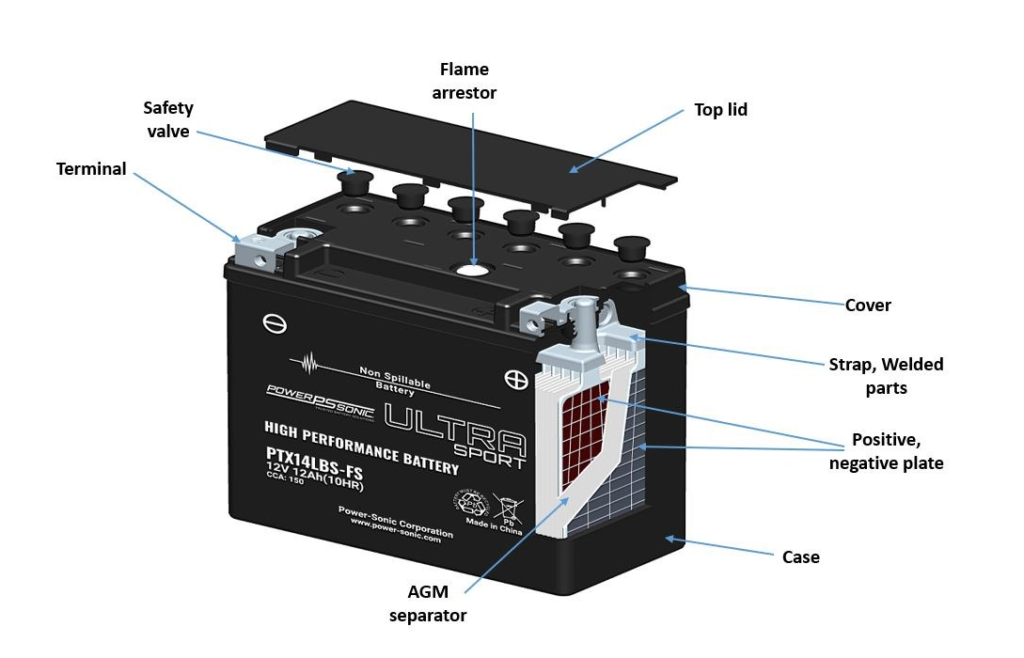
AGM batteries are also sealed, so there’s no off-gassing (or very little) and liquid loss. Instead, this gas is recombined with the electrolyte solution. For this reason, they’re considered maintenance-free.
In an AGM battery, the lead plates are more closely packed together. This configuration allows the battery to be smaller and often a little lighter. These compact batteries are now the most common type of battery used in motorcycles.
Lithium batteries
While a standard and AGM battery use lead plates and an electrolyte solution to maintain a charge, a lithium battery uses new technology. You may have heard of lithium-ion batteries before. This technology powers most consumer electronics, including the phone you may be using to read this article. Lithium motorcycle batteries are considered lithium iron phosphate batteries. In these batteries, energy is stored in lithium-ion phosphate solution rather than an electrolyte solution of AGM and traditional batteries.
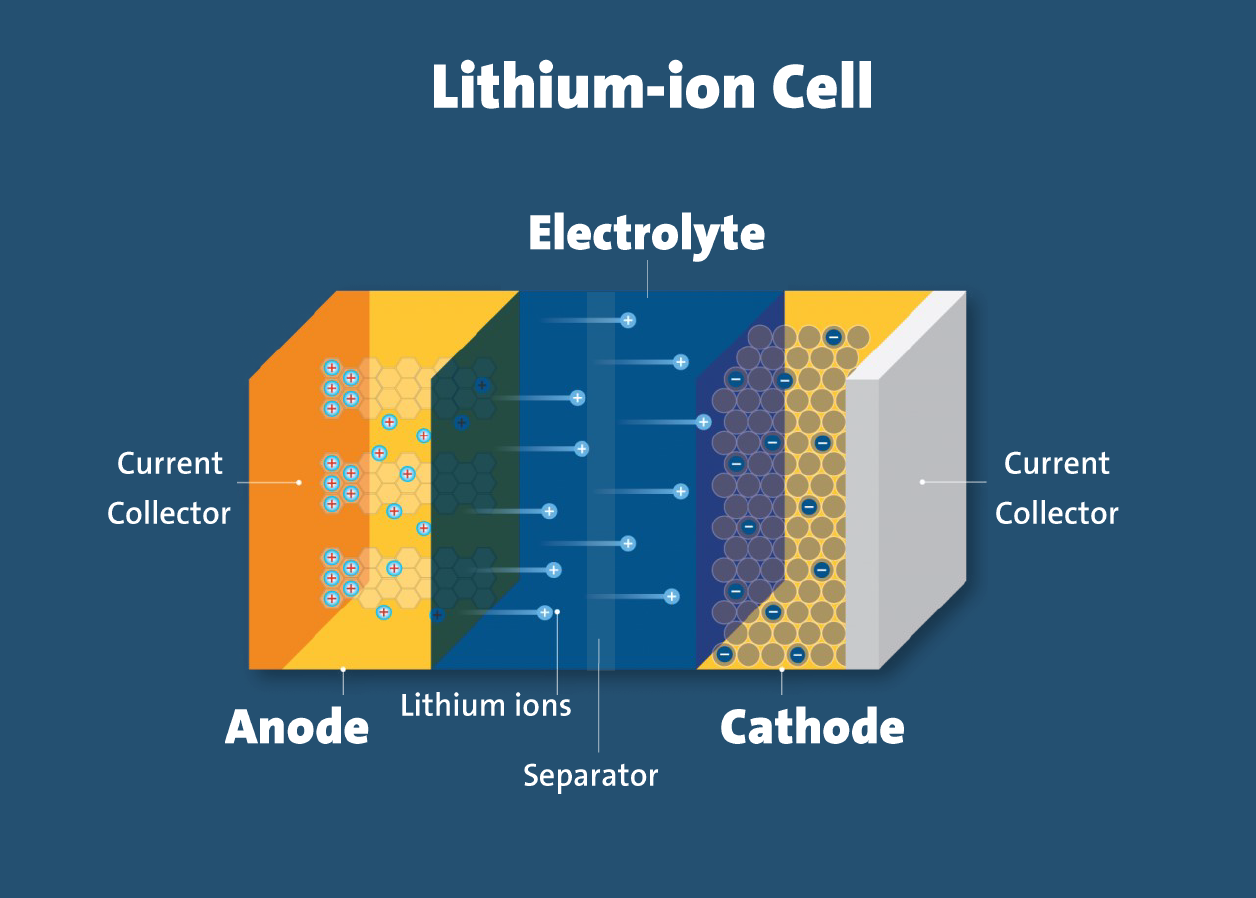
Since most of the weight of a conventional battery is due to the lead plates, a lithium battery will be much lighter and smaller. In addition, lithium iron batteries rely on inorganic phosphates, making them one of the safest and most fire-resistant batteries on the market. That’s good since most of us keep them in our pockets all day.
One downside of a lithium battery is that it doesn’t give you a lot of warning before it dies. A Lithium battery will usually work until it doesn’t. While n AGM battery may produce the tell-tale signs of a dying battery- lights dim, starting is sluggish, etc., a Lithium battery may seem fine one minute and then go completely dead the next.
What battery is best for a motorcycle
While you can still purchase and use a traditional flooded lead acid motorcycle battery, your best bet when you need to purchase a new battery is to choose an AGM or Lithium battery. For this reason, we’ll focus on these two technologies and review the pros and cons of each one.

When comparing apples to apples, either an AGM or lithium battery will work just fine to power your motorcycle since motorcycles are still fairly simple when it comes to electricity needs (unlike a car with high-end displays, radios, navigation systems, and computers, even the most advanced gas-powered motorcycle requires less electricity than a standard car. For this reason (at least for motorcycles today), one technology over the other won’t impact your day-to-day use of the motorcycle.
Charging and Battery Management
The big difference in what technology to go with has less to do with the energy output than the energy input (charging). Most newer bikes have a battery management system (BMS) capable of charging an AGM and lithium battery. Older bikes built when this technology wasn’t commonplace may not be able to put out enough volts to charge the newer batteries adequately. A lithium motorcycle battery, for example, may need 13-14 volts to charge it. An older bike wasn’t always built to provide this output and may leave you with a dead or undercharged battery.
When charging out of the bike, you’ll also want to use specific chargers that can read the battery voltage and adjust when needed. Luckily, special chargers are readily available and not too expensive for most lead-acid batteries. If you bought a charger recently, you probably already have one. You just need to make sure that it can safely charge the type of battery you have.
If you have a lithium battery, however, you will want to make sure you have a special charger designed for this type of battery. Lithium batteries are a completely different type of technology than lead acid batteries, and charging them is a little more advanced (you don’t want to catch your bike or garage on fire by using the wrong charger!)
Battery Capacity
Generally, an AGM motorcycle battery will have a slightly higher energy density than an equivalent lithium battery. This reason has less to do about the quality of the battery and more with the way electricity is stored. Each battery will have cells, with a certain number of volts for each one. A 6-cell AGM battery will have 2 volts/cell. An equivalent lithium battery will have three cells, with 3 volts per cell. While they both add up to 12 volts, the way the electricity is disbursed is a little different. AGM and lead batteries use amperage hours (AH) to measure output. A
Lithium battery uses an equivalency value called PbEq. When done, this number can be converted to AH and is usually just a little less than an AGM battery. Is it enough to make a big difference? Probably not. However, if you’re charging your phone, GPS, communication system, radio, etc., you may need to pay closer attention to this number.
What makes lithium batteries a good choice?
So, if the battery capacity of an AGM is just as good if not slightly better than a lithium battery, why would I consider anything else? Well, the big difference you’ll notice in a lithium battery is its size and lighter weight. A Lithium battery weighs considerably less than an AGM battery. While this may not seem like a big deal, ounces make pounds, and when adding other items to your bike, you may want to cut weight elsewhere.
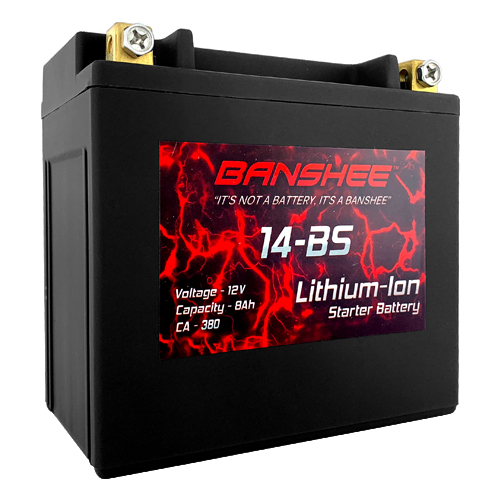
Lithium batteries are also known for their fast charging, one of the biggest advantages they hold over AGM motorcycle batteries. They also usually last longer and have a longer lifespan.
What makes AGM batteries a good choice?
An AGM battery is a tried-and-true method. However, it offers many advantages over a traditional lead-acid motorcycle battery and packs a comparable punch when compared to a lithium battery. You may get a little more juice out of an equivalent AGM battery.

AGM batteries are also widely available anywhere you shop for motorcycle parts. Often, the biggest deciding factor may be price. AGM batteries are much more affordable than lithium batteries. However, lithium batteries are relatively new, so you’re paying extra for this technology. Over time, the prices will become more comparable, but for now, the AGM will win in the wallet test.
What about Gel batteries?
A Gel cell battery is another good option for your motorcycle. However, Gell cell batteries are not quite as readily available as an AGM or lithium battery. However, you may see a few options available at your local motorcycle shop. A Gel battery is similar to an AGM, but the gel battery will use a gel substance instead of the glass mats. These batteries are also completely sealed and maintenance-free.

In some respects, a gel batter can outperform an AGM battery and sit a very long time without discharging. The main downside to the gel battery is availability and cost. Expect to pay significantly more for a gel battery over an AGM. While the benefits are there, it will be up to you to decide if the juice is worth the squeeze.
Deep Cycle Batteries
Another type of battery design you may have heard about is deep cycle batteries. These batteries are a special design of battery that provides a longer, steady stream of electricity rather than a burst of electricity needed to start a vehicle. Deep cell batteries are typically used in RVs and boats, as they require lower energy demands and a deep discharge capacity over a longer period. They’re great for a solar battery array, charged by a solar panel, but not useful for vehicle starting. Did you ever hear of cold cranking amps? This rating applies to vehicle batteries, stating how much energy can be released for large power demands, like turning over your motorcycle engine.
Batteries in cold weather
While some may argue that lithium-ion batteries perform better in cold weather, they still suffer from cold temperatures, like lead acid batteries. You may see some advantages, but not much to make this a deciding factor for a motorcycle battery. It’s always a good idea to keep any battery stored in a safe and temperature-controlled place when the temperature drops, especially if you’re not riding regularly.

Conclusion
Motorcycle batteries are one of the most important components for your bike. Without a properly functioning one, you can be left in the driveway, or worse, stuff on the side of the road miles from home. When it comes to purchasing a new battery, you have more choices today than you ever had before. While this is a good thing, it can also make the buying process more complicated.
When choosing a new motorcycle battery, your best choice will likely be an AGM or lithium battery, assuming your bike can charge it. The decision will ultimately be up to you, and you’ll need to decide if you want to spend the premium on a lithium battery. Both batteries will perform equally well in your motorcycle, meaning you won’t likely notice any significant differences between the two for regular use. A lithium battery does provide some advantages, especially with charging speed, longevity, and longer cycle life. However, it will cost you more. Regardless of what you choose, the best piece of advice to take away is to take care of your battery. Don’t overcharge it; use appropriate chargers, and keep it charged and warm in the winter. A happy batter makes for a happy rider.
